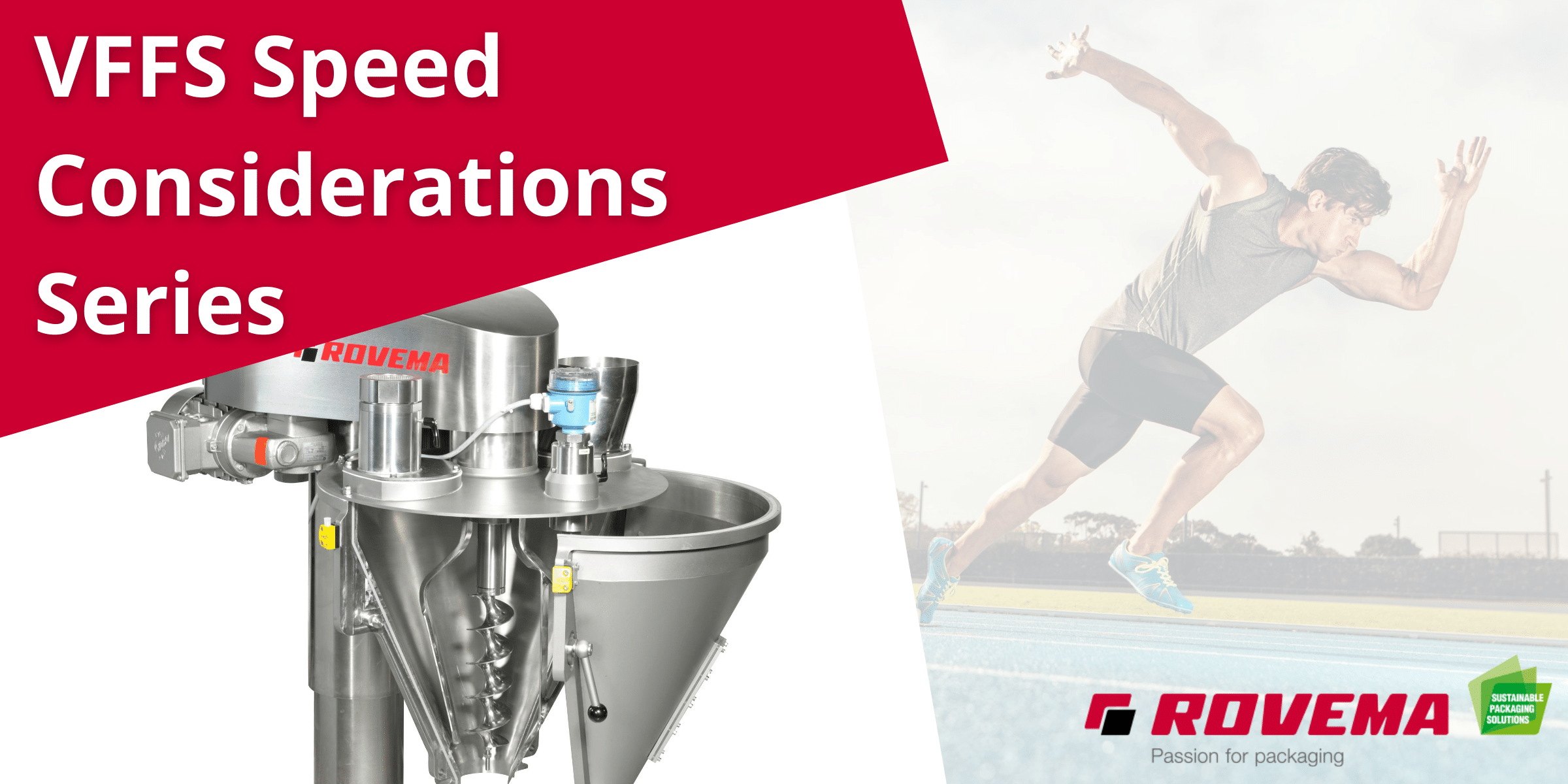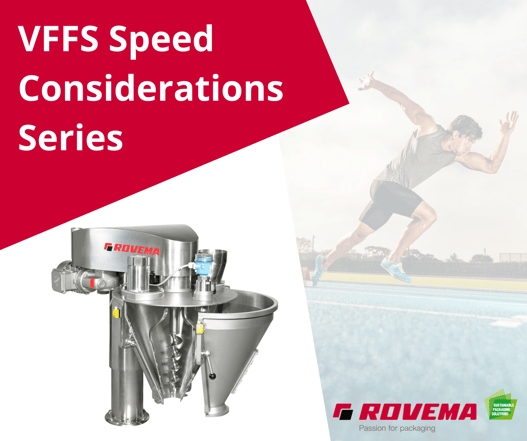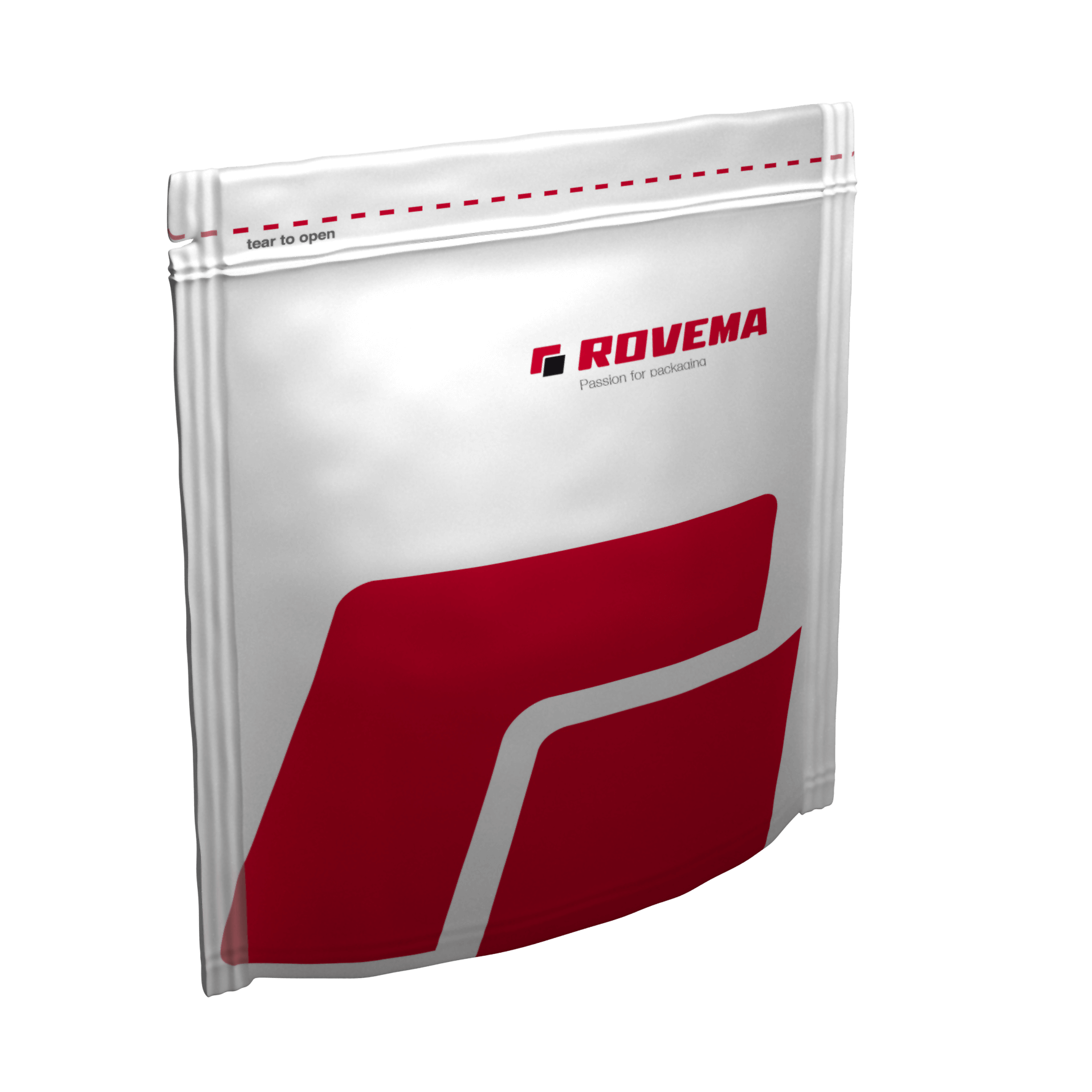1 min read
Un-Packing The RoPack® (Doypack) Stand Up Pouch
The Rovema Brown Bag Blog Series: The Final Chapter This blog marks the sixth and final installment of our Rovema Brown Bag Blog Series. Throughout...
4 min read
 Emily Brogan
:
Fri, Feb 16, 2024
Emily Brogan
:
Fri, Feb 16, 2024


High speed VFFS packaging operations have many nuances due to their many variables. So much so that we’ve covered these variables in three separate articles now. Just to recap: in the first, we discussed the relationship of your bag width and head space and how that has a direct impact on filling speed (AKA the speed of your entire operation). In the second article we unpacked product characteristics and what products are more or less conducive to high speeds, and covered technical solutions for problematic factors like stickiness, abnormal shapes and products that tend to float.
Setting aside the initial variables, one might wonder why trade-offs for speed occur as package styles become more complex. While film certainly plays a significant role, what other factors could potentially hinder the efficiency of your packaging operations?
Premium pouch packaging styles often incorporate high-quality film materials. To enhance shelf presence, stability, and merchandising uniformity, it is often advised to use a durable material for forming stand-up pouches. With high expectations to uphold, stand-up pouches require careful consideration of film choice to avoid slouching or instability, especially when compared to standard pillow bags.
For salted snack packaging that satisfies the ever increasing consumer trend of on-the-go and convenience eating, many producers are migrating to resealable stand up and often doy style stand up pouches, which are known for their excellent full-panel billboard areas and solid base for stand up ability. For the RoPack®, the patented Rovema doy style stand up pouch, using Stabilo® seal ridges on the bottom lend itself to the sturdy base that retailers love but requires a multi layer film with an inside sealant layer.
For premium retail coffee packaging, a popular package type with many coffee roasters also involves Stabilo® seals, with four corner seals that offer excellent stand up ability. What about the film material allows for this result? Coffee products, due to their high oxygen sensitivity, already require practically iron-clad barrier properties and an inside sealant layer, but its also recommended they have an outside seal layer as well to tack bottom fin flat to the bag for additional stability.
Ensuring that your film aligns with your shelf presentation standards and meets the barrier properties necessary for shelf life management is crucial. To maximize production speed while safeguarding your premium materials, proper handling of the film as it moves through the bagger is essential.
Utilizing vacuum pull belts and a power film unwind minimizes strain on the film, allowing for larger film reels, reducing reel changes and downtime, and preserving the film draw down belts.
Maintaining control over your film and sealing parameters post-film carriage journey is key to optimizing your packaging process.
Thicker films do require more energy to achieve adequate seals with the following tactics often being used:
Rovema uses the third method that achieves the highest quality and consistent seals but that doesn't equate to a slow packaging operation. Our patented sealing technology, Premium Seal® coupled with our D-motion sealing allows you to maximize the dwell time of the sealing process as well as integrate two different sealing pressures in one cycle. By using completely servo driven seal jaws with no reliance on springs to drive force, the jaws can apply very light pressure to thicker films to preheat the inside sealant layer before applying force.
This allows for wrinkle free, delamination-free welded seals that are considered the strongest in the industry. And by using D-Motion sealing as opposed to traditional rotary circular sealing, that amount of dwell time can be fully adjusted as well to the needs of your film
Most packaging machines are required to adapt to different situations. The actual product being packaged may not differ much, if any, but often they need to run different package sizes or even something as incremental as light vs dark roast ground coffee, where the actual product densities vary (if this sounds odd, check out this coffee frac pack article) which require changeover time and programming modifications.
Many modern VFFS machines have “recipes” in the HMI that allow for repeatability of setup, basically baselining the parameters for different product runs. This is huge for minimizing the amount of time needed for changeovers as well as maintaining the consistency of your packages to stand the test of time and any potential operator and maintenance turnover.
Rovema's dedication to reducing changeover time and optimizing material usage is a key driver behind many of their cutting-edge innovations. One such innovation is the implementation of automatic film tracking, which tackles the challenge of lengthy setup times and the need for multiple cycles to achieve accurate tracking during changeovers. By seamlessly tracking the film along the entire carriage and automatically adjusting its position, this technology not only significantly reduces changeover time but also prevents downtime and package rejects by ensuring precise film management throughout production runs.
Trade offs of speed with bag style complexity will be a factor for any producer for the simple fact that time is money and the more packages that you can get out the door every day only lowers your overhead cost per unit. With the added perceived risks associated with package complexity, it’s no mystery of why Marketing and Operations team innovation meetings can potentially reach deadlock verdicts due to their differing priorities.
Marketing teams want to satisfy customer demands and differentiate their products while Operations teams want to run product efficiently and without surprises. Partnering with capital equipment suppliers that have deep knowledge of the priorities of both sides of the boardroom table is key. These suppliers have the insights and motivation to invest in technologies that make both teams successful and help them sleep soundly at night.
I hope that this series was able to give you a deeper understanding of the intricacies of your VFFS machine, your packaging operation and what kinds of conversations we are having with customers every day as we consult them in building out the best VFFS solution for their products, stakeholders and their own customers. As the market continues to evolve and new challenges arise, we continue to address them with new innovations.
If you would like to discuss how your overall equipment effectiveness or bagger speed could be improved upon, we would love to start a conversation with you. We understand that time is a hot commodity but conversations like this can more than compensate you. If you'd like to speak with an expert, fill out the form below or connect with a live person now in the chat.

1 min read
The Rovema Brown Bag Blog Series: The Final Chapter This blog marks the sixth and final installment of our Rovema Brown Bag Blog Series. Throughout...

VFFS Speed Considerations Last week we kicked off our series on VFFS speed considerations, and discussed how package width and head space relate...

There are numerous reasons why someone may consider a vertical packaging machine for their coffee packaging needs. Your business may be expanding and...